Recent Fire Damage Posts
Restoring Your North St. Paul, MN Home After Fire Damage: How SERVPRO Can Help
10/19/2023 (Permalink)
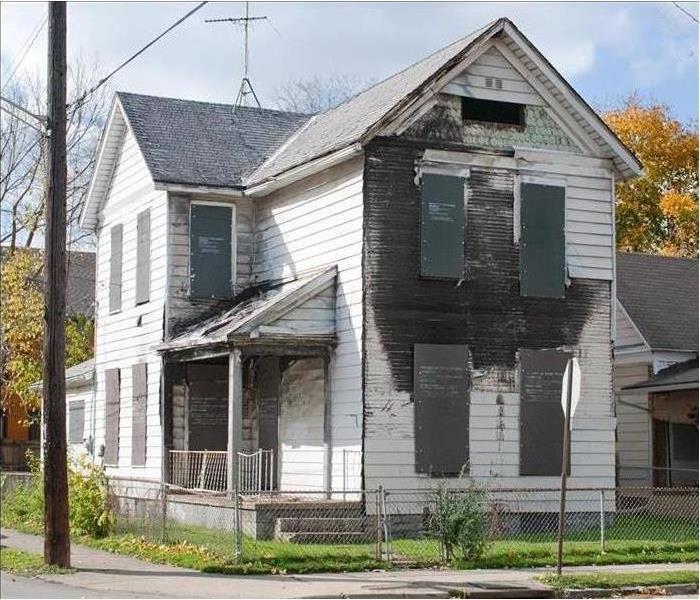 Fire damaged home in North St. Paul, MN.
Fire damaged home in North St. Paul, MN.
A house fire can be one of the most traumatic experiences a homeowner can endure. Not only does it pose a significant threat to life and property, but the aftermath can be equally devastating. In North St. Paul, Minnesota, where the winters are harsh, and the community is tight-knit, dealing with fire damage can be particularly challenging. However, there's hope, and that hope comes in the form of professional fire damage restoration services like SERVPRO.
In this blog, we will explore what steps to take after suffering fire damage in your North St. Paul home and how SERVPRO can assist in the restoration process.
3 Steps to Take After Suffering Fire Damage
Step 1: Ensure Safety
The first and most crucial step after a fire is to ensure your safety and the safety of your family. Evacuate the property immediately and call 911 if you haven't already. Firefighters in North St. Paul are skilled in handling such emergencies and will work diligently to extinguish the flames. Once the fire is out and the authorities give the green light, it's time to assess the damage and plan for restoration.
Step 2: Assess the Damage
After the fire has been extinguished and it's safe to return, assess the extent of the damage. Take photographs for insurance purposes, and make a detailed list of the damage to both the structure and your personal belongings. This information will be crucial when dealing with your insurance company. North St. Paul residents often rely on their homeowner's insurance to cover the costs of fire damage restoration, so being well-prepared can make the claims process smoother.
Step 3: Contact SERVPRO
One of the most significant steps you can take to restore your North St. Paul home after fire damage is to contact SERVPRO. SERVPRO is a nationwide leader in fire damage restoration, and they have a strong presence in Minnesota. Their professional team is experienced in handling the unique challenges presented by fire damage in a cold climate like North St. Paul.
How SERVPRO Can Help
1. Immediate Response
SERVPRO understands that fire damage is time-sensitive. The longer you wait, the more extensive the damage can become due to secondary issues like water damage, soot damage, and structural weakening. That's why they provide a 24/7 emergency response service. When you call SERVPRO, their technicians will arrive at your North St. Paul home promptly, ready to assess the situation and start the restoration process.
2. Comprehensive Cleanup and Restoration
SERVPRO offers a full range of services, from initial damage assessment to complete restoration. This includes:
Water Damage Restoration: After firefighting efforts, your home may have water damage from extinguishing the flames. SERVPRO uses advanced equipment to remove excess water and moisture and prevent further damage, such as mold growth.
Soot and Smoke Cleanup: The residue from a fire can spread throughout your home, causing extensive damage. SERVPRO uses specialized techniques and equipment to clean soot and smoke damage from surfaces, including HVAC systems.
Structural Repair: Fire can weaken the structural integrity of your home. SERVPRO can assess and repair structural damage to ensure your home is safe and sound.
Content Cleaning: Your personal belongings, if not completely destroyed by the fire, may be affected by smoke and soot. SERVPRO offers content cleaning and restoration services to salvage as much as possible.
3. Odor Removal
One of the most challenging aspects of fire damage is the lingering odor. SERVPRO uses advanced deodorization techniques to remove these unpleasant odors, leaving your North St. Paul home smelling fresh and clean.
4. Working with Insurance
SERVPRO can work directly with your insurance company to streamline the claims process. They understand the complexities of insurance policies and can provide documentation and information to support your claim. This can significantly reduce the stress of dealing with insurance during an already difficult time.
5. Certified Technicians
SERVPRO's technicians are certified and trained to handle fire damage restoration. They stay up-to-date with the latest techniques and equipment, ensuring the highest level of service for North St. Paul residents.
Suffering fire damage in your North St. Paul home is a devastating experience, but it's essential to know that you're not alone. Professional restoration services like SERVPRO are dedicated to helping you recover and rebuild. Their experienced team, prompt response, and comprehensive services can make a significant difference in the restoration process, ensuring your home is once again a safe and comfortable place to live. Don't hesitate to reach out to them if you find yourself in the unfortunate situation of dealing with fire damage in North St. Paul. They're ready to help you on your journey to recovery and restoration.
Steps You Can Take To Improve Your Kids' Safety During a Home Fire
8/31/2023 (Permalink)
 Follow These Tips To Improve Your Kids' Safety During a Home Fire in your North St. Paul, MN property.
Follow These Tips To Improve Your Kids' Safety During a Home Fire in your North St. Paul, MN property.
Imagining your home and family being threatened by fire can be scary, but when you and your children are prepared for this scenario, you'll all feel a little more confident. Your children may have participated in fire drills at school in North St. Paul, MN, now it's time for them to run through these drills at home as well. Regular practice is crucial for your kids safety.
Focus on Kids Safety
During Fires According to the National Fire Protection Association, it only takes a minute or two for fire to spread through your home and prevent safe evacuation. However, there are several things you can do to improve your chances:
- Install fire alarms in each bedroom, hallway, and floor of the home.
- Close bedroom doors while sleeping.
- Create fire escape plans and practice them regularly.
- Teach and practice fire safety with your children.
Install Fire Alarms
There are two types of smoke detectors, and experts recommend that you have both or a device that combines both types of technology. Once you’ve installed an appropriate number of alarms, make sure you replace batteries once or twice a year, keep them clean and free of debris, and know when to replace the alarms.
Close Bedroom Doors
According to firefighters, roughly half of residential fires happen while the family is asleep. The good news is that closed doors reduce smoke damage, slow the spread of the fire, and help family members stay safe. During a fire, the closed bedroom door helps keep the room's temperature below 100 degrees Fahrenheit, improves oxygen levels in the room, and reduces the level of carbon monoxide.
Create and Practice a Fire Escape Plan
Your fire escape plan should have tips for helping children who can't escape on their own, a meeting place outside of the home, and multiple paths of escape. Work with family members to pinpoint multiple routes of evacuation, including windows. Teach children to leave the home immediately, not even stopping to call 911, gather belongings, or look for other family members.
Reach out to your local fire department for more education and child-based resources. It isn't uncommon for children to feel frightened at the sight of firefighters, so the more familiar they are with the uniforms, tools, and sounds, the better.
Teach and Practice Fire Safety
The U.S. Fire Administration also provides resources you can use to teach your children basic fire safety and what to do during a home fire. These lessons must include ways to prevent fire, and you must also teach your children vital steps, such as checking for heat, smoke, and flames before opening doors, where to stay if they cannot get out of their rooms, and what to do if their clothes catch on fire. Your kids' safety improves with each home fire drill and teaching session you practice.
In the Event of a Fire …
Even with plenty of fire prevention and kids safety steps, your home may still be affected by a fire. When this happens, fire damage cleanup and repair professionals can help with the reconstruction efforts while you focus on the well-being of your family members.
The more you can do before a fire, the better prepared you and your children will be for getting through the experience safely.
6 Smoke Odor Remediation Tips
9/15/2022 (Permalink)
 If your home has fire damage, exist some tips to remediate the odor.
If your home has fire damage, exist some tips to remediate the odor.
Whether it's cigarette smoke, burnt food, or damage from a house fire, smoke odors are notoriously difficult to get rid of. These six tips can help you in your smoke cleaning efforts.
- Let Some Fresh Air in
If you are dealing with a lingering smoke odor, open your windows and doors. Place fans with the blades blowing outward in the largest windows. This will help remove smoky air from your home. Leave the fans running for 24 hours if you can. Remove smoky books, furniture, clothing, and other items from your home and place them outside in a sunny area for several hours. The UV rays from the sun can neutralize odors. However, sunlight can also damage some items, so delicate belongings may need to be moved to the shade.
- Clean With Vinegar
White vinegar can be a useful smoke cleaning tool. The low pH of vinegar alters the higher pH of smoke molecules, which reduces the potency of their smell. Fill some small bowls with white vinegar and place them in the area you are trying to clean. Let them sit overnight. You can also boil a pot of vinegar on the stove and then allow it to simmer for an hour or two. Clothing that smells like smoke can be washed in your washing machine with a half cup of white vinegar, instead of laundry detergent.
- Try Baking Soda
Baking soda is useful for absorbing a variety of odors, including smoke smells. You can use the same technique as with the vinegar by placing baking soda in small bowls and leaving the bowls in the area you are cleaning for 24 hours. You can also sprinkle a thin layer of baking soda onto upholstered furniture, carpets, and rugs. Leave it overnight and then vacuum. Baking soda can also be useful for cleaning books and other small items. Pour a half cup of baking soda into a plastic trash bag and then add the smoky items. Tie the bag shut and leave it overnight.
- Use Some Charcoal
The carbon molecules in charcoal are useful for trapping odors and removing them from the air. Activated charcoal works best. Place several bags of charcoal in the smoky area and leave it overnight. Make sure it stays in the bags because the charcoal can leave stains if it comes in direct contact with surfaces.
- Try Steam Cleaning
Steam cleaning can be useful for floors, walls, and upholstery. The heat melts the tar and oils that trap smoke molecules, allowing you to wipe them away with a sponge or cloth. Mist affected surfaces lightly with steam and then wipe the steam away.
- Call a Restoration Company
If do-it-yourself methods are not effective or you have a large amount of smoke damage, consider contacting a fire restoration company in North Saint Paul, MN. These companies have professional training and equipment and can often remove stubborn odors that may be beyond the reach of do-it-yourself remedies.
Lingering smoke odors can seriously degrade your enjoyment of your home and possessions. Fortunately, there are methods of smoke cleaning that can effectively remove these odors.
How Many Fire Alarms Should I Have in My Home?
7/19/2022 (Permalink)
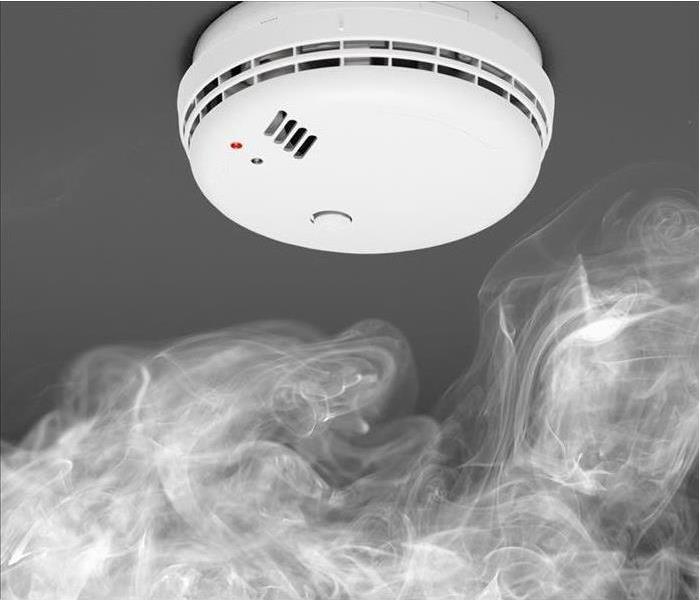 Proper fire alarm placement is essential to prevent fire and smoke damage.
Proper fire alarm placement is essential to prevent fire and smoke damage.
When it comes to fires, you can never be too safe. It's essential for you and every member of your White Bear Lake, MN, family to understand the facts about fire safety and prevention. You must also have an emergency plan in place. Part of this preparation means ensuring your home is adequately supplied in terms of fire alarm and fire extinguisher numbers throughout the house, as well as proper placement. Where should smoke alarms be placed throughout a home?
6 Tips to Consider When Placing Smoke Alarms Throughout a Home
- Every Level of the Home
Fire detectors should be installed on every floor of your home. This includes your basement.
- Every Bedroom
Many fires begin at night when people are typically sleeping. Therefore, every bedroom should have its own smoke alarm.
- Outside Every Sleeping Area
In addition to every bedroom, a smoke alarm must be placed outside every sleeping area in your home.
- Up High
Just as important as having the correct number of fire alarms is proper placement. After all, if they're not where they should be, or in areas where they shouldn't be, it'll risk them not detecting a fire or giving a false alarm. Firefighters and fire damage restoration specialists advised that fire detectors need to be high on the walls or on the ceilings since smoke and heat rise.
- Away From Cooking Appliances
The smoke alarm closest to the kitchen should be placed no closer than 10 feet from all cooking appliances. Otherwise, false alarms could happen regularly.
- Away From Drafty Areas
Smoke detectors should be placed away from potentially drafty areas. Common areas with more air circulation include spaces with windows, doors, vents and ceiling fans.
Proper fire alarm numbers and placement is essential to prevent fire damage and smoke damage. Begin today creating your fire plan to avoid being a victim of the unthinkable.
Maintain Your Gas Range To Prevent a Fire
6/23/2022 (Permalink)
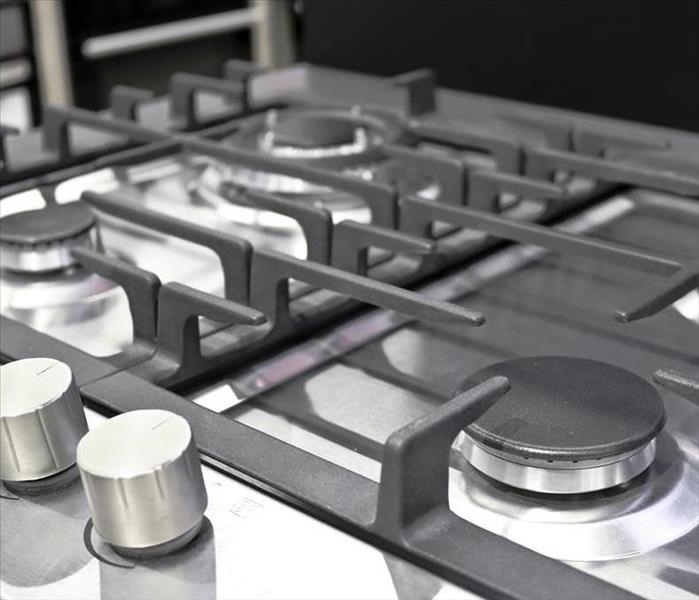 Learn more about Gas Range and Prevent Fire Damage in your Property.
Learn more about Gas Range and Prevent Fire Damage in your Property.
Life gets busy in North St. Paul, MN, so you're not always thinking about cleaning as you go. However, when it comes to kitchen fires, taking a proactive approach can prevent a disaster. One helpful way to do this is to clean your gas range.
Range Cleaning Tips
1. Gather the Supplies
First, gather all your cleaning supplies. You will need the following:
- Dish Rags
- Scrub Brush (e.g., a soft bristle toothbrush)
- Vinegar
- Dish soap
2. Clean After Cooking
Cleaning your stovetop after each use will make things much easier long-term. Grease and other materials can build up over time, making them challenging to remove. Keeping your stove clean can also help prevent smoke smell during cooking.
3. Remove Grates
Fill your sink with hot water and grease-cutting dish soap. Remove the grates so that you can wash them and more easily access other parts of the stovetop. Then, soak the grates while working on the rest of the cleaning.
4. Clear Crumbs
Clean the crumbs from the stovetop with a damp paper towel or dry brush. You can also use a vacuum. This is an essential step for preventing a cooking fire. A crumb catching on fire could get out of control fast and require the services of fire damage restoration professionals.
5. Clean Stove Top
Next, you can either get a store-bought cleaning solution or create your own mixture of one part vinegar to one part water. Spray the stovetop and let the solution sit for a couple of minutes. Then clean it with a sponge or rag. You may have to scrub parts of it where grease has built up. Be sure to use something that won't scratch your gas range.
6. Clean Grease Stains
If you still have stubborn grease stains, you will probably need to use grease-cutting dish soap to completely remove them. Put a small amount of this soap directly on the stain and then use a soft toothbrush to brush in a small circular motion. Once you've removed the grease, wipe it clean with a damp cloth.
7. Remove and Wash Burner Caps and Heads
Next, remove the burner caps and place them in the soapy water with the grates. Also, remove the burner heads and clean them of grease and debris.
8. Clean Under the Range
Many people forget one part of this process: cleaning under the range. Lift the range (check your owner's manual for instructions), and you will probably find a bunch of crumbs. Vacuum this area free of loose debris. Afterward, wipe it down with a damp rag, let it dry and close the top.
9. Wash Grates and Burner Heads
Finally, wash the grates and burner heads that have been soaking in the warm, soapy water. Scrub the grease off with a soft toothbrush or another non-scratch cleaning tool. Then, rinse and dry them.
10. Replace Grates and Burner Heads
Now, it's time to place your grates and burner heads back on your stovetop. You are sure to notice a difference next time you cook. You can also be confident you have a lower fire risk by having a clean stovetop.
Take time to thoroughly clean your gas range today. Remember to wipe it down after each use to enjoy cooking on a pristine surface.
Fire Insurance: What Is and Isn’t Covered
3/14/2022 (Permalink)
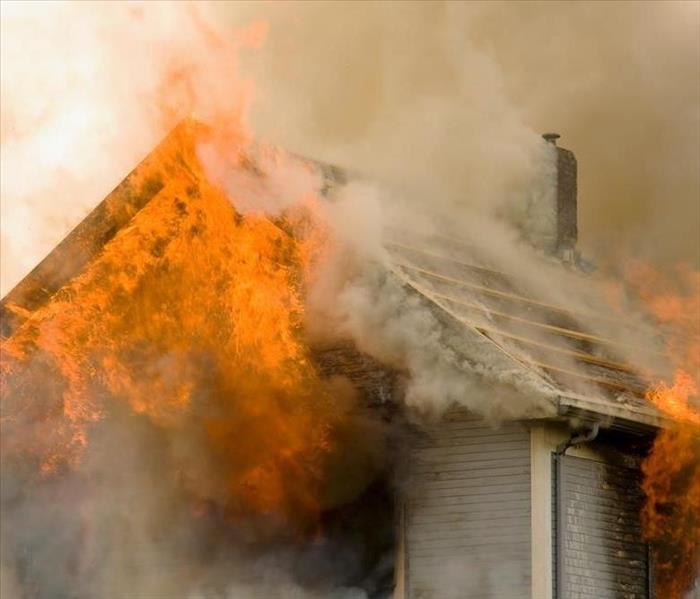 Learn More about Fire Insurance by Following these tips.
Learn More about Fire Insurance by Following these tips.
In 2020, the National Fire Protection Association reported 490,500 structure fires in the United States. While a professional fire damage company will have the expertise, tools and equipment to return your home to like new, the insurance process behind the scenes to make that happen may get confusing. That makes it important to understand what is and isn’t covered by a homeowners insurance policy. While each policy is different, they typically have similarities. Understanding the basics makes it easier and smoother to handle the aftermath of an unexpected event in your North St. Paul, MN home.
What Does Fire Insurance Protect?
In most cases, there are three protected items:
Main Dwelling: This covers the house itself and attached structures, such as a garage or porch, for any smoke or fire damage.
Detached Structures: Any sheds, fences, detached garages or other structures should be covered. In some cases, the landscaping may be included as well.
Personal Property: Many of your belongings are protected. This may include clothing, appliances and furniture. Content loss isn’t as cut and dry. Often, policies will cover between 40% to 75% of losses.
Types of Fires Covered and Not Covered by Insurance
Like with many things in life, not all fires are considered equal. Depending on the source of the home fire, your claim may be rejected. In most cases, your insurance will cover the following types of fires:
Chimney Fires: As long as the wood-burning stove or fireplace is well-maintained and free of hazards, it should be covered.
Electrical Fires: This includes power surges, short circuits or faulty wiring that causes a fire to break out.
Accidental Fires: From a lit candle to falling over, a grease fire or a dry Christmas tree igniting, most policies include these unexpected events.
Wildfires: Damage from these are covered but only if you live in an area that is not prone to them.
While insurance is usually a vast umbrella that covers quite a bit, there are situations in which filing a claim may actually cause you more problems. Arson and vandalism by the homeowner are never covered. If a claim is made, the person making the claim will likely be penalized and may face legal issues. Any fire claim is thoroughly investigated, so the odds are never in an arsonist’s favor.
Another situation that will likely be denied is a vacant home fire. If the home has been vacant for more than 30 days, the liability falls under the homeowner for not adequately protecting the home. A vacant property is considered one that has no occupants or personal belongings. If you are planning to sell a home and know that it will sit vacate until sold, there is additional insurance that can be purchased to cover potential damage from fire, vandals and other unexpected situations.
While no one wants a home fire to break out, the statistics show that it happens more than people would like it. Being prepared to handle an unexpected event means understanding your homeowner's insurance policy. By knowing what is and what isn't covered, it makes it easier to navigate the claim.
Are You Covered After a Fire?
1/5/2022 (Permalink)
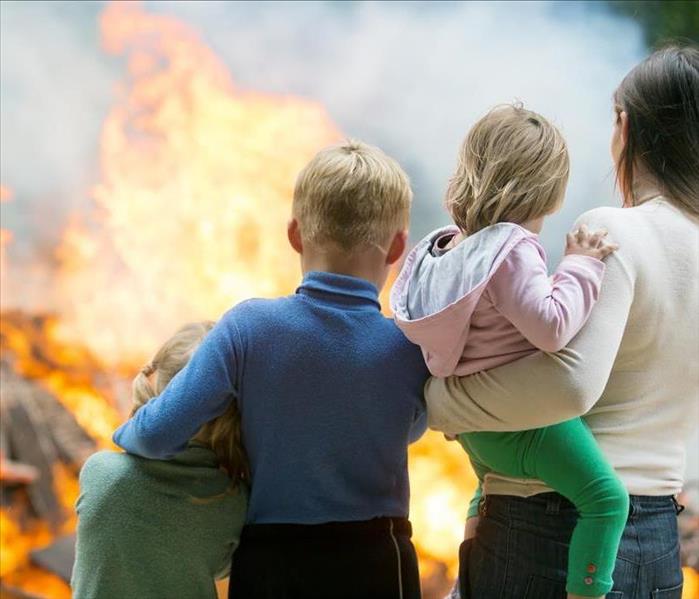 Consider this information as regards your Coverage for better protect your White Bear Lake, MN house.
Consider this information as regards your Coverage for better protect your White Bear Lake, MN house.
A home fire can be a devastating experience. To watch something you have nurtured go up in flames is difficult, but as long as you and your family are safe, you can still recover from it, especially if you have a solid home insurance policy. Your coverage should help you pay for fire mitigation services as well as what you lose. There are a few things that aren't covered by a standard policy, though.
Important information to consider as regards your Coverage.
Loss
A loss from a fire is one of the many reasons it's important to keep your home insurance policy current. Rather than have to pay out of pocket for all the things that are destroyed or damaged in the fire, you can likely file a successful claim for several expenses:
- Damage mitigation
- Structure restoration
- Item replacement
- Short-term relocation
- Liability coverage for damage to adjacent properties
It's important to know which expenses your policy will cover if your home in White Bear Lake, MN catches fire. You don't want to be caught in the surprise of unexpected out-of-pocket costs after the fact. Review your policy with your agent and add any additional coverage you need.
Arson
The vital component in an insurance claim is that the triggering event has to be an accident. Fires that occur as a result of a fallen candle, a kitchen grease fire or a short in electrical wiring are likely to be covered. Fires that homeowners set on purpose are not. You cannot intentionally set a home fire and collect money on the damages from your policy. This is arson fraud, and it is a crime. Not only will your claim be denied but you will also probably face charges.
Wildfire
Natural disasters are often excluded from basic coverage. Some policies may cover damage from wildfires while others may not. Insurance companies assess not only your needs but their risks before developing a policy to offer you. Wildfires leave behind such widespread devastation that it would not be feasible for providers to automatically include such damage in a standard property policy. If your home is located in an area that is prone to wildfires, you may need an additional policy to cover that specific circumstance.
Vacant Home
Another occurrence that is not likely to be covered under your home insurance policy is a vacant home fire. If, for example, your vacation home catches fire while you are away, the basic policy may not cover the cost of mitigation or help you recoup any of the cost of replacing lost items. To make sure your valuable property is covered even when you're not living there, inquire about a vacant home policy through your provider.
The aftermath of a home fire can be very expensive, especially if your insurance policy doesn't cover every issue that you encounter after the disaster. Understanding the terms of your coverage is essential. Once you know what your policy does and does not cover, you can supplement it with other policies that match your needs more thoroughly.
It's better to have more coverage than you need than wind up in a situation where you don't have enough to compensate for your losses.
How To File a Fire Insurance Claim
10/20/2021 (Permalink)
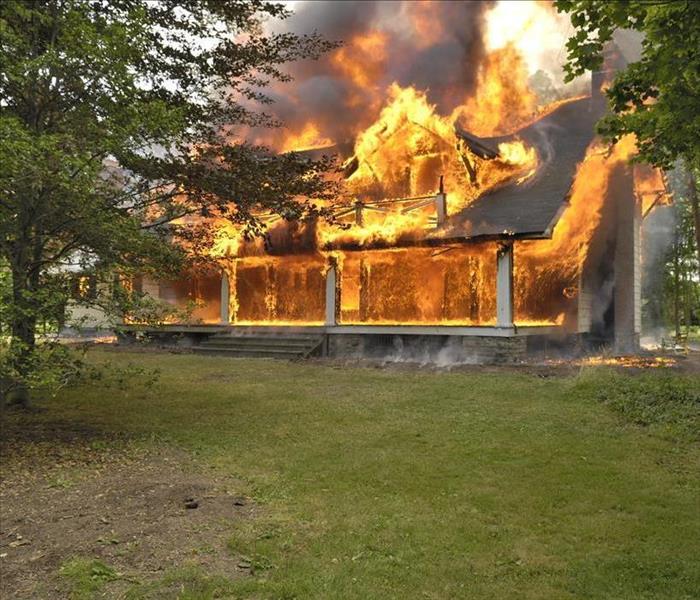 Fill a fire insurance claim to get repaired your home in White Bear Lake, MN.
Fill a fire insurance claim to get repaired your home in White Bear Lake, MN.
With wildfires and other fire risks increasing due to extreme weather events, homeowners need to know how to file a claim when they need fire restoration. The earlier homeowners file a claim, the sooner they can get their damaged property repaired or replaced.
5 Tips for Filing a Fire Insurance Claim
Whether your home has been destroyed or partially damaged, the first step to getting back to normal is to file a fire insurance claim. These tips can help you get started.
1. Request a Partial Payment Upfront
Many people who have been through a house fire have immediate needs that can not wait on the insurance company to finish processing a claim. If you need money for essential items, such as clothes or toiletries, ask your insurance adjuster if the insurance company can issue you a partial payment to cover these items. However, avoid purchasing anything you do not need, because the insurance company may not cover items it deems to be unnecessary. The amount you receive will be deducted from your final settlement.
2. File Your Claim as Soon as Possible and Follow Up
The fire restoration process can not begin without the insurance company doing its part. As soon as your family is safe, call your insurance company to report your claim. If your adjuster requests anything from you, such as an inventory of damaged items, photos, receipts, or estimates, return these items promptly. Keep track of all of your communication with the insurance company. Keep original documents and make a copy for the insurance company. If you don't hear back from your insurance company, call them to find out what the delay is. If the company is not being cooperative, you may want to speak to an attorney about what the laws in White Bear Lake, MN, are regarding how long the insurance company has to settle your claim.
3. Track Your Living Expenses
Most homeowners' policies include coverage for loss of use. This coverage provides reimbursement for expenses incurred while your home is not habitable. However, it only covers the difference in what you would normally spend if you were living in your home, versus what you are spending to live in a hotel or rental. Extra expenses might include meals out, laundry services, and the cost of a hotel room. If you stay with friends or family, your insurance may reimburse them for extra costs incurred to have you in their home.
4. Keep Paying for Your Insurance
Some people think that they no longer need to pay for their insurance because their home has been destroyed. However, homeowners' insurance includes liability protection, so you should keep paying for it until you replace that coverage.
5. Submit Anything You Find After the Claim Is Closed
Insurance companies often print something on checks about the payment being "in full" or final, but this is not legally binding. If you discover additional damage that requires smoke cleaning or other restoration services, you can still submit the damage for reimbursement.
Your home is probably your most important and most valuable asset. It is important to stay on top of your insurance claim to ensure fire restoration is completed as quickly as possible.
Keep It or Toss It After a Fire
8/17/2021 (Permalink)
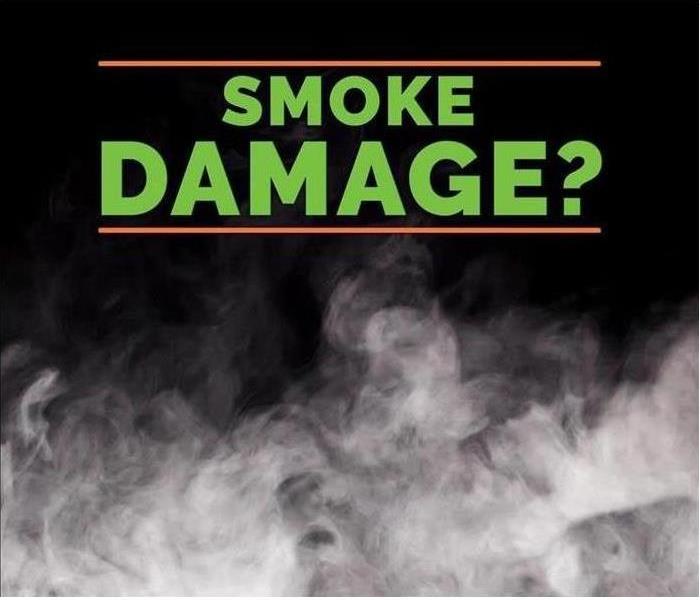 After suffering fire and smoke damage you might be wondering what you can keep and what you should toss.
After suffering fire and smoke damage you might be wondering what you can keep and what you should toss.
When the ash has settled after a home fire in North St. Paul, MN, there's still a lot of recovery work to do, and some of the most difficult work is still ahead. Sifting through the rubble and deciding what to keep and what to throw out is one of these troublesome steps. You may find several items that can be salvaged and repaired after suffering fire damage, such as furnishings and jewelry.
There are some items that must always be thrown away:
Food Items
Any foods that were stored in open containers or permeable packaging should be thrown out immediately. Foods that were sealed in cans, jars, and other containers may also be contaminated. The heat from the fire can cause food to spoil. Foods may absorb toxic chemicals and pollutants.
Food in the refrigerator may be safe unless
- The fridge smells smoky.
- Soot is visible inside the fridge.
- The refrigerator lost power during or after the fire.
- Food has an odd odor.
- Frozen food isn't cold or hard.
If you have any doubts or concerns about your food, throw it out and replace it. Remember fire damage isn't limited to areas where flames were present; high levels of heat can also cause damage.
Medications and Cosmetic Products
Anything you plan to consume or put next to your skin should be carefully inspected after a fire. This includes any medications, vitamins, supplements, and similar products. If you don't think these items were close to the flames, inspect their storage area for soot, fire extinguisher dust, and similar damage. Watch out for warping on bottles and other containers. Any sign of these damages means that the products aren't safe to use.
When in Doubt, Throw Them Out
Even if these items were directly exposed to flames or smoke, the high temperatures in the vicinity of the fire can damage items. If you aren't sure, ask qualified fire restoration and cleanup professionals for help. Talk to your fire insurance representative to learn more about your fire damage coverage.
Smoke and Soot Cleanup
6/24/2021 (Permalink)
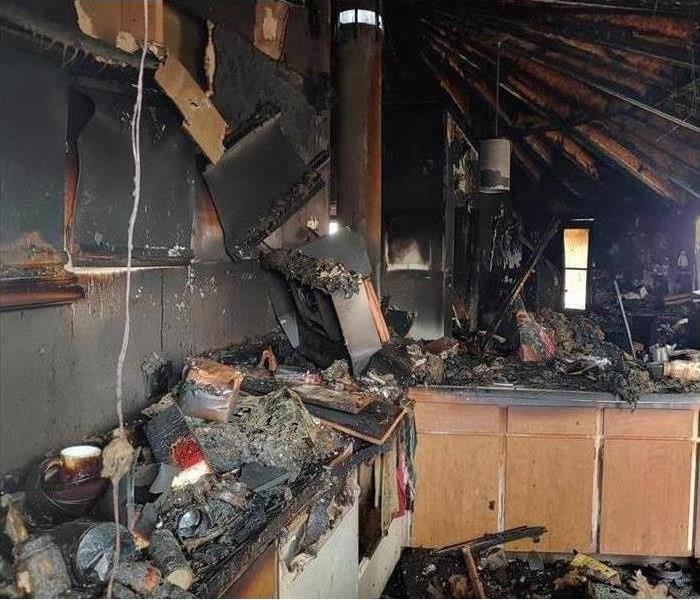 A commercial kitchen that has fire damage.
A commercial kitchen that has fire damage.
Smoke and soot are very invasive and can penetrate various cavities within your home, causing hidden damage and odor. Our smoke damage expertise and experience allow us to inspect and accurately assess the extent of the damage to develop a comprehensive plan of action.
Smoke and soot facts:
- Hot smoke migrates to cooler areas and upper levels of a structure.
- Smoke flows around plumbing systems, seeping through the holes used by pipes to go from floor to floor.
- The type of smoke may greatly affect the restoration process.
Different Types of Smoke
There are two different types of smoke–wet and dry. As a result, there are different types of soot residue after a fire. Before restoration begins, our certified technicians will test the soot to determine which type of smoke damage occurred. The cleaning procedures will then be based on the information identified during pretesting. Here is some additional information:
Wet Smoke – Plastic and Rubber
- Low heat, smoldering, pungent odor, sticky, smeary. Smoke webs are more difficult to clean.
Dry Smoke – Paper and Wood
- Fast burning, high temperatures, heat rises therefore smoke rises.
Protein Fire Residue – Produced by evaporation of material rather than from a fire
- Virtually invisible, discolors paints and varnishes, extreme pungent odor.
Our Fire Damage Restoration Services
Since each smoke and fire damage situation is a little different, each one requires a unique solution tailored for the specific conditions. We have the equipment, expertise, and experience to restore your fire and smoke damage. We will also treat your family with empathy and respect and your property with care.
Tips for Teaching Fire Safety to Kids
5/25/2021 (Permalink)
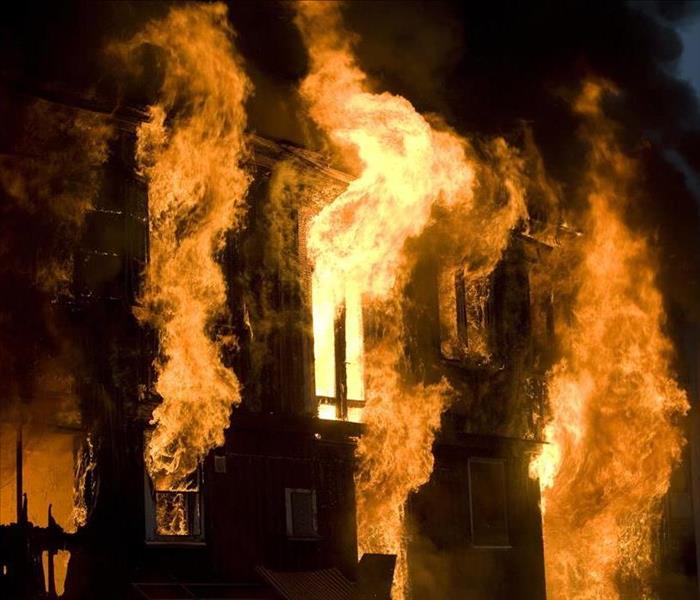 A house fire can be devastating.
A house fire can be devastating.
As a parent, your kids' safety is likely the number one priority on your list. Therefore, it just makes sense to have a simple escape plan that they can remember so that they can get out of your house in North St. Paul, MN, quickly in case of a fire. Here are a few things to teach them to ensure they know the drill.
Teaching Fire Safety to Kids
How To Get Out of the House
The smoke detector is probably the first indication that there is a home fire. When your kids hear this, they must know the steps to take to get to safety:
- Bed roll - Instead of sitting up in bed, roll to their stomachs and use the hand closest to the side to guide them to the floor.
- Floor crawl - Crouch down on hands and knees or on their bellies if smoke and heat are already in the room and crawl toward the escape.
- Test door - Touch door to see if it's still cool and if so, open slowly to see if it's safe to crawl out of the room.
Practice doing these things with your whole family so that everyone can be familiar with what to do in the event of an emergency. Your kids' safety may depend on their ability to get out of the house on their own, and these drills teach them how to do that.
How To Find Each Other After Escaping
You also want your kids to know where to go after they get out of the burning house. Fire restoration experts recommend that include a safe spot where you will meet if you get separated in your fire escape plan. A trusted neighbor's house or a well-lit parking lot of a business down the street are both good options.
Knowing what to do when there's a fire is important for everyone in the family. Protect your kids' safety by teaching and practicing the plan until they are comfortable with it.
3 Tips for Removing Smells From Your Microwave
12/29/2020 (Permalink)
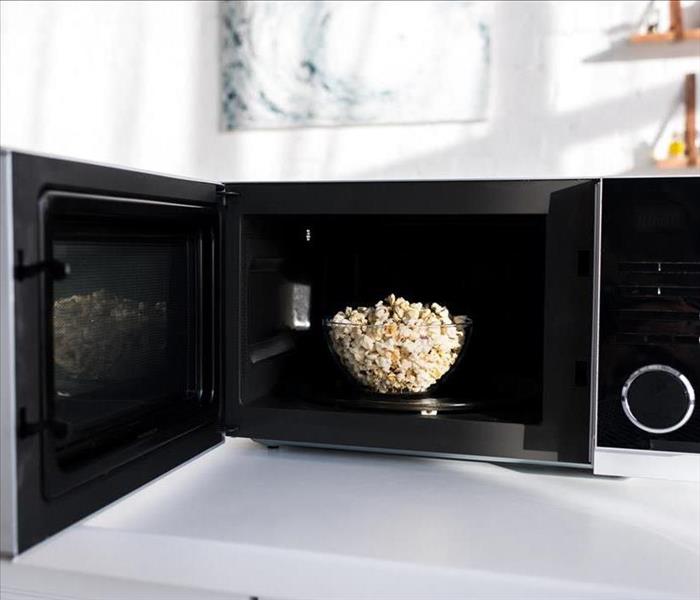 Remove the smell from burnt popcorn
Remove the smell from burnt popcorn
The smoke smell from burnt popcorn is so pungent, many workplaces have banned the popular snack food from the break room. However, if you haven't banned this noxious food from your home yet, you might need these three tips for removing microwave smells.
Tips For Removing Microwave Smells
1. Clean the Inside
Sometimes, all you need to do to eliminate odors is to clean your appliance thoroughly. Start by using a rag or sponge to remove any debris or burnt food from the interior of the oven. Next, place a cup of water in a microwave-safe container and heat it in the oven for three to four minutes. The steam this produces will help loosen up food particles.
Use a soft, moist cloth and a small amount of dish soap to clean the interior surfaces and vent grill. Finally, rinse with clean water and dry with a soft, lint-free cloth. Leave the oven door open for two to three hours to allow it to air out.
2. Try Steaming With Lemon Juice or Vinegar
If the smoke smell persists after cleaning, try neutralizing odors by using lemon juice or vinegar. Follow the same steps as in the first tip, but instead of using plain water, add one tablespoon of lemon juice or vinegar and then heat for two to five minutes.
3. Deodorize Overnight
For really persistent odors, try this overnight method. Put an open box of baking soda in the oven at bedtime and leave it overnight. You can also use baking soda to remove odors from nearby cabinets. However, if odors continue to be an issue after trying this tip, you may need to contact a professional cleaning service in North St. Paul, MN, to assist you.
A smoke smell or other odor from your microwave can be a chore to get rid of. These three tips can help you get your home smelling fresh.
What Does Renters Insurance Cover After a Fire?
10/21/2020 (Permalink)
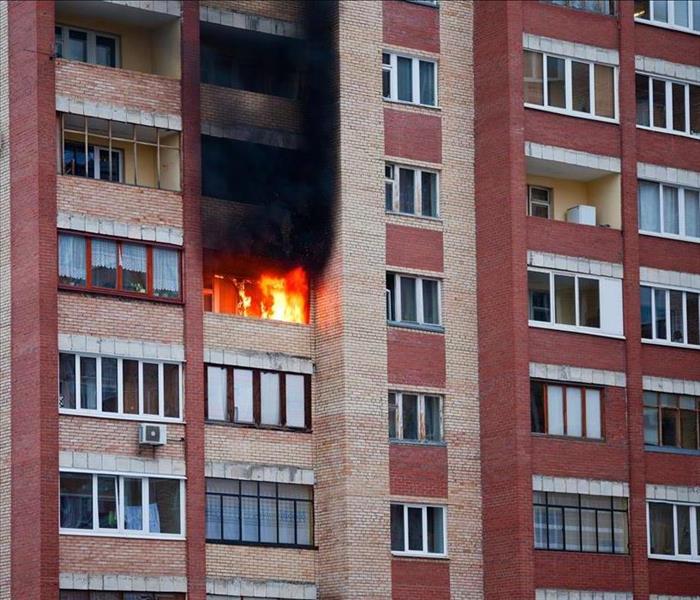 Fire damage in a building.
Fire damage in a building.
When a fire breaks out in your rented home, you may have a lot of questions about what your renters insurance covers and what isn't included.
Tips To Prepare For Fire Damage
There are several things you can do to prepare for this stressful experience before it happens:
- Understand the most common causes of residential fire damage and take steps to prevent them.
- Install smoke and fire alarms throughout the home and keep fire extinguishers conveniently available. You may be eligible for better insurance rates by taking these steps and any others recommended to you by your agent.
- Create a plan of action to guide your steps after a fire breaks out. Make sure this plan includes an evacuation route and phone numbers, such as for first responders.
- Learn what your insurance covers and what isn't covered.
The short answer to your concerns about insurance coverage is that you'll be reimbursed for your belongings.
More Details About Coverage
Fires are covered by renters insurance. Any of your possessions, furnishings, and other belongings are eligible for reimbursement. If the fire causes your home to be uninhabitable, your insurance provider may pay for you and your family to stay at a hotel in White Bear Lake, MN. If you were responsible for the fire and resulting damage, your insurance may cover some of that damage and associated losses. If you left a candle burning or caused an electrical fire by overloading an outlet, the damage is covered by your policy, unless there's evidence that you caused the fire intentionally.
Things Not Included in Your Policy
Naturally, there are some exceptions to this coverage. For example, your insurance doesn't cover damages to the structure of the apartment itself. Any work completed by fire restoration and cleanup professionals should be covered by the insurance the property owner carries. Whether the property owner has the right insurance coverage or not, your insurance won't cover these repairs.
Protecting your home and family from fire damage doesn't begin and end with your renters insurance. Take the steps listed above and learn more about preventing fires by working with your insurance agent and other professionals.
Understanding Fire Safety Protocols
9/15/2020 (Permalink)
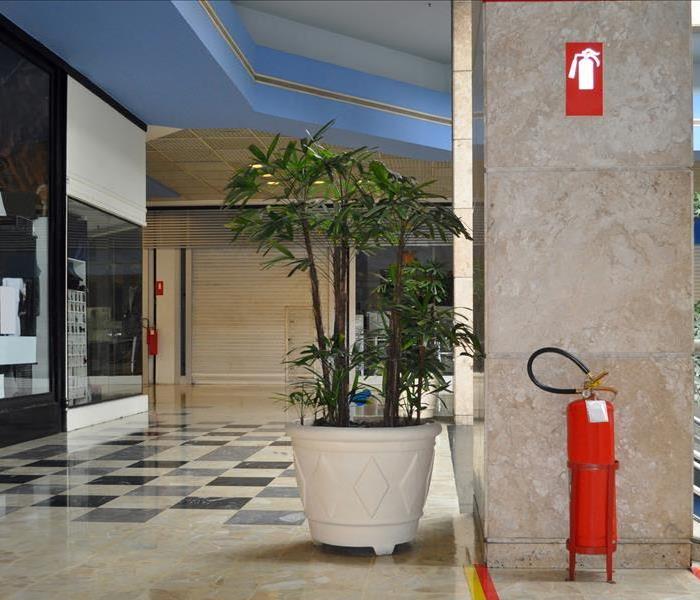 Every person in your building needs to know how to use an extinguisher.
Every person in your building needs to know how to use an extinguisher.
Safety is an important aspect of every building's established procedures. It's not enough to have your protocols written down in a manual and tucked away on the shelf, though. You must make sure that every employee knows the fire safety practices for your building in White Bear Lake, MN. At minimum, everyone needs training on how to use a fire extinguisher and what to do in the event of an emergency.
Fire Safety Practices That Every Employee Should Know
Extinguisher Usage
Every person in your building needs to know how to use an extinguisher. According to fire damage experts, correct usage follows the P.A.S.S. method:
- Pull the pin to break the seal.
- Aim the nozzle at the base of the fire.
- Squeeze the handle to release the contents of the canister.
- Sweep the spray back and forth along the base of the fire.
Not every flame requires calling emergency services. Often, a small fire can be doused with the tools you have on hand. For example, a small kitchen fire in your break room should be easy to put out with a fire extinguisher. If the canister is emptied and the fire still persists, however, it is time to get the professionals involved.
Emergency Assessment
If a fire is too big to put out with an extinguisher, evacuation procedures should be immediately put into action. Everyone in the building should have the training necessary to know exactly what to do in the event of an emergency. In addition to regular training and fire drills, evacuation routes should be posted in prominent locations on every level throughout the building for easy reference.
Understanding fire safety practices such as using a fire extinguisher and when to evacuate the building is essential for everyone who works in your building. The more people know about the protocols you have in place, the more likely they are to be able to get themselves and others to safety should a fire occur.
Tips for Effectively Using Security Fencing After a Fire
7/21/2020 (Permalink)
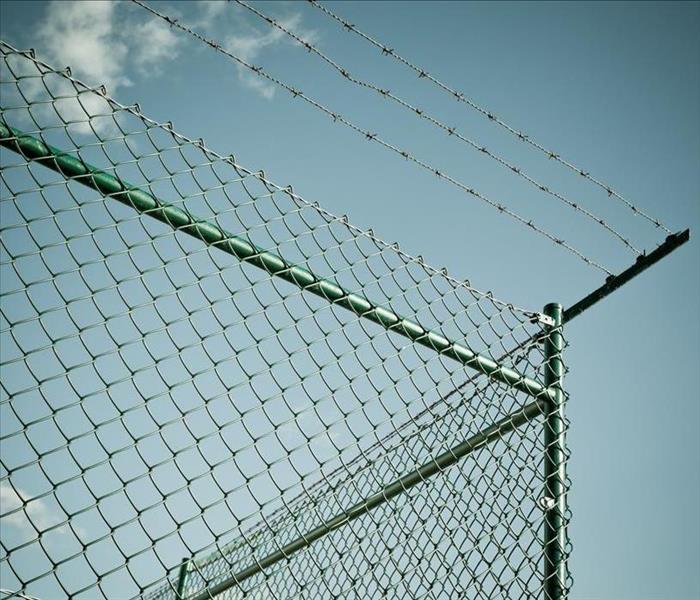 A security fence is important after a fire at your North St. Paul, MN, commercial property.
A security fence is important after a fire at your North St. Paul, MN, commercial property.
When your North St. Paul, MN, business has suffered fire damage, putting up a security fence may not be the first thing you think of. After all, what do you have to lose when your building and its contents have been burned up? There are several reasons to put up this layer of protection around your property:
- Damaged buildings tend to attract people with vandalism or theft on their minds.
- You could be held liable if intruders are injured while in your fire-damaged building.
- If people wander around inside your building, they could cause further damages that won't be covered by your insurance policy.
- The insurance company could require fencing as a preventative step.
When you hire a fire damage remediation company to board up holes in the roofing, ask them to put up fencing as well.
Maintain a Secure Barrier
Once you've recognized the need for a security fence, use the following tips to make sure the barrier is effective:
- Make sure there's a clear view of the fence. If there are bushes or trees close to the fence, trespassers will use these areas to get over the fence without being seen.
- If your building is located in an area without streetlights, consider installing some lights around the perimeter of the fence. Position your lights inside the fence where they can't be disabled by anyone with criminal intent.
- Keep up with maintenance on the fence. If the fence belongs to the fire damage remediation company, you won't have to worry about this step. However, you can make sure the fence is protected from pests, weeds, and other natural elements.
- Recognize that the gate is the weakest point of the fence. Use a strong lock to keep the gate shut and make sure there's plenty of light focused on this spot.
Work closely with the professionals who are handling the fire cleanup and damage remediation to make sure the fence is an effective barrier.
Security Reduces Losses
A security fence is an important step in cleaning up and moving on after a fire at your North St. Paul, MN, commercial property. This security step can end up saving you a lot of time and money throughout the fire restoration process.
Tips to Securing Your Building After a Fire
6/17/2020 (Permalink)
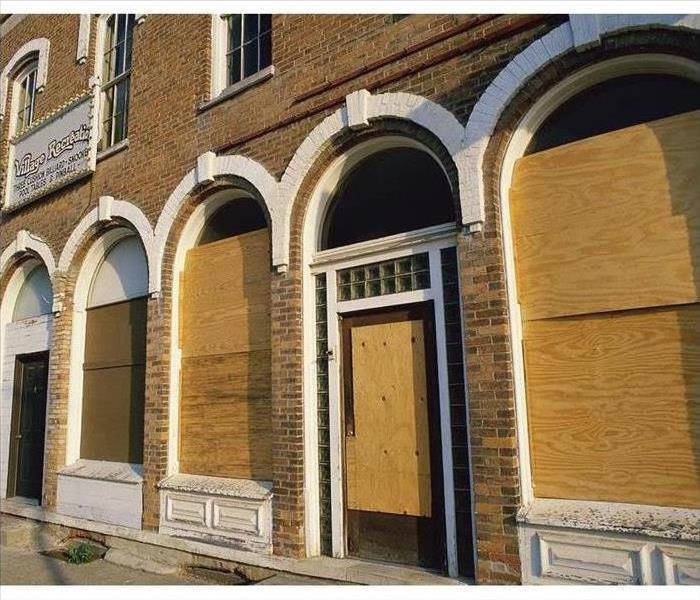 Board up doors and windows, as many of these have likely been compromised due to the fire.
Board up doors and windows, as many of these have likely been compromised due to the fire.
The effects of a fire in your office building can be devastating. Even minor fire damage can become a burden on your business. In severe cases, you won’t be able to enter your building until cleanup and restoration crews make it safe to do so. In the meantime, it’s important to secure your facility to prevent mischief or thievery.
The Rationale
You’re already facing turmoil and stress having to relocate your business and pick up the pieces after a terrible ordeal. You don’t want to have to add insult to injury by dealing with people breaking into your building. Looting is common in temporarily closed buildings.
- Your insurance company will probably require you to secure your facility.
- Emergency services personnel will direct you in how to best secure your building.
- Do not attempt to go inside your building without permission from emergency services.
Close all Entrances
During normal operating situations, you’ll lock your doors and may even have an alarm system deterring suspicious activity around your building. However, fire damage may make these protective measures obsolete, and looters may see a golden opportunity. Board up doors and windows, as many of these have likely been compromised due to the fire.
Board up Other Possible Entry Points
Looters won’t hesitate to find other ways to get inside your building. After the fire, there are likely gaps and holes in the structure where someone could access the facility. Look for any other spots you need to board up and make sure they are secure.
Consider Security
One of the best ways to keep people away from your White Bear Lake, MN, building during the fire cleanup and restoration process is to place a security guard or two on site. This extra cost will be well worth your efforts.
Fire damage can be difficult enough to contend with; you don’t want people breaking in your building. Make sure you follow these guidelines to ensure items inside your office remain untouched.
Do You Have an Emergency Preparedness Plan for Your Pet? You Should!
6/17/2020 (Permalink)
 Keep your pets safe
Keep your pets safe
Pets are family too, and as such, they need to be included in their families' fire emergency preparation plans. If you have a furry friend, you need to establish a pet preparation plan that guides you and your other family members on what to do in the event of an emergency to ensure that your canine, feline or other pet makes it out of the home safely, too.
Preparing Your Pets for Fire Emergencies
Some considerations to make when devising your plan are as follows:
- How to keep your pets from causing fire emergencies
- What supplies your pet will need in the event of an emergency
- How often you should practice your pet safety plan
- What to do if you are forced to evacuate
By taking each of the above into consideration ahead of time, you can devise a plan that will better help you respond in the face of a real fire emergency.
Prevent Your Pets From Starting Fires
The National Fire Protection Association estimates that approximately 1,000 house fires are started by pets each year. You can prevent your pets from starting fires by practicing the same safety measures as you would with your children. Remove stove knobs, extinguish open flames, use flameless candles and secure young pets when you leave the house.
Know What Supplies You'll Need, and Practice!
To increase your response time, have an emergency bag ready to grab and go in the event of a fire. This bag should contain everything your pet will need to stay comfortable and healthy while away from home, such as canned dog food, medications, identifying tags and the like.
In addition to preparing a bag, practice the plan. Train them to come when you call that way you're not looking for them when you should be running out of the house.
Prepare for Evacuation
Evacuation in the event of a fire is a very real possibility. Have a safe place to where you and your pet can go until it is safe to return to your home.
Your fire emergency plan should provide for what to do with your pet in the event of an emergency. If it doesn't, work with your White Bear Lake, MN, fire safety team to devise an effective plan today.

 24/7 Emergency Service
24/7 Emergency Service
















